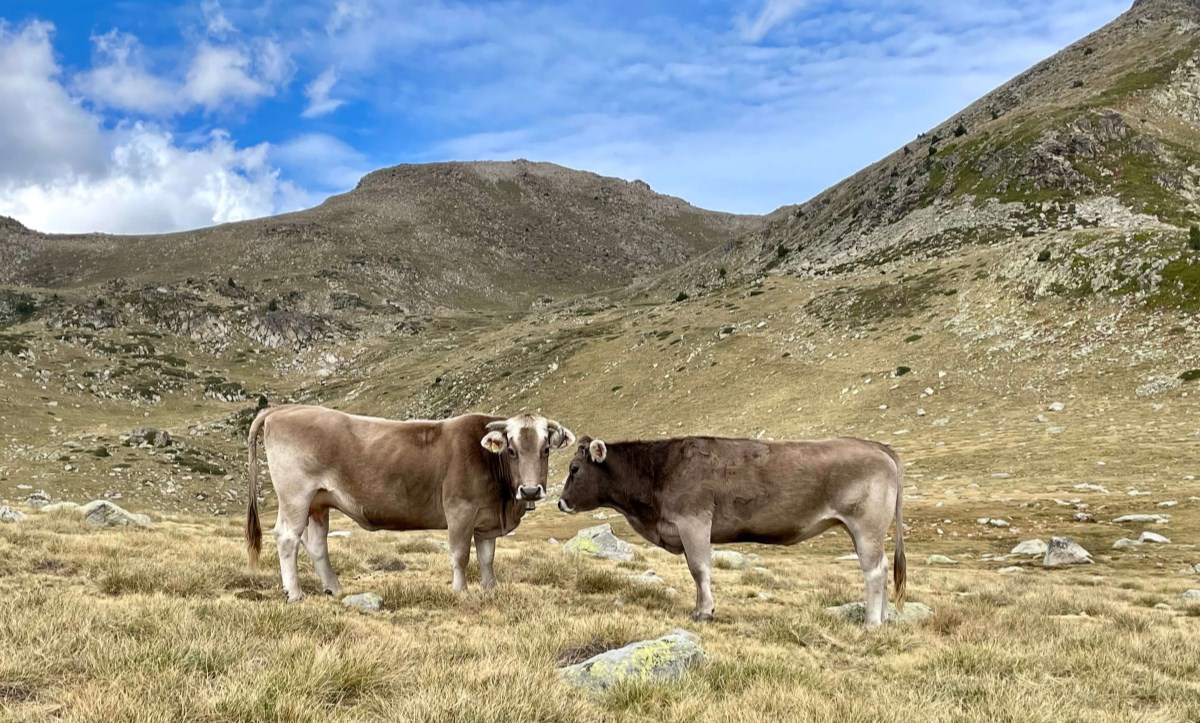Projects

The peculiarity of landscapes shaped by livestock activity such as those we have in Andorra is that today they look like natural landscapes, but in reality they are not. That’s why livestock not only plays the role of raising livestock, but also helps preserve the landscape, maintain mountains and pastures, or prevent fires, among other things. That is why livestock and pastures form the fundamental basis of a series of ecosystem services of great importance and with ecological functions, and even more so in a country where the surface of supraforest pastures represents 40% of the territory.

To better understand the pastures, an assessment of the pastures of Andorra was carried out between 2003 and 2015 with various studies on forage production and quality, floristic diversity and livestock loads. These studies focused on the six major types of pastures in the country and more than 600 vegetation inventories were conducted at 300 sampling points. The results obtained, in addition to a better knowledge of the general state of pastures, show what are the possible alternatives for adaptation and management of pastures, related to three major aspects of the pastoral system: forage (better use ), herds (number of heads, types of livestock) and activity (pastoral calendars). The study also aims to serve as a basis for developing pastoral planning plans in parishes and for controlling wasted areas and those affected by overgrazing.
In 2020, a book on the pastures of Andorra was published in collaboration with the Department of Agriculture of the Government of Andorra, the Ethnography Archive of the National Archive of the Government of Andorra, and the University of Lleida, where the results of this project are presented and where a perspective of the current state of livestock and mountain pastoralism in Andorra is given. Specifically, the publication covers the evolution of the agricultural sector and in particular the livestock sector in Andorra over time and how it has been adapted and evolved according to the socio-economic and political environment, while enabling the study of the routines that are followed in pastoral units throughout the territory. In addition, it has also evaluated the quality of the supraforest pastures, which has made it possible to identify the main plant species that make them up and the nutritional value they have for livestock. The work emphasizes the future of livestock as a result of climate change and the challenges it must face, such as land use and generational continuity.

Subsequently, the results of this study have allowed for, together with the Department of Agriculture of the Government of Andorra, contact with the INRAE (Institut National de Recherche pour l'Agriculture, l'Alimentation et l 'Environnement) in France to study in more detail the forage quality of some types of pastures and meadows, to establish tools for adapting pastoral practices to the consequences of climate change. The consequences of climate change in mountain areas will affect both the physical environment and the flora and fauna. In fact, we are beginning to observe changes in the spatial distribution and abundance of some species, but also variations in the dates of seasonal events in their life cycle. Although it is currently difficult to have a clear idea of the effects that this climate change will have on the vegetation of meadows and mountain pastures, it is believed that production and forage quality will be affected. There is currently a prolongation of the growing season, but the increase in the intensity of droughts in the summer will cause production losses. There is also an increase in frost episodes after the spring restart of the vegetation, causing a decrease in the quantity and quality of forage resources. In this context, it is increasingly important to make good use of available biomass to limit losses, avoid overgrazing and preserve plant species and their resilience.
The study began in 2020 and is based on the analysis of grass samples taken throughout the summer in several plots of mowed meadows, to later analyze the forage quality in the INRAE of Clermond-Ferrand.



 Benjamin Komac
Benjamin Komac Clara Pladevall
Clara Pladevall Manel Niell
Manel Niell